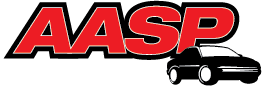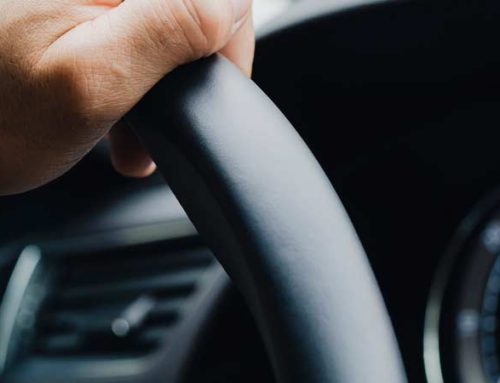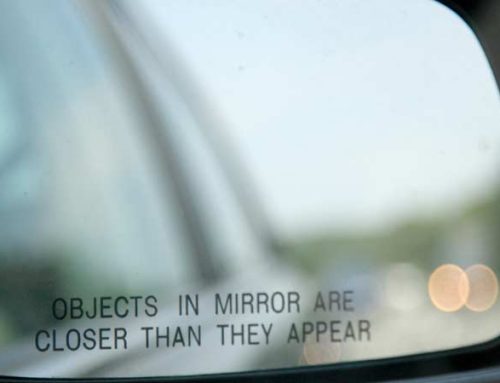SCRS Alerts Collision Repair Industry to Concerns Over Aftermarket Structural Replacement Parts
In November 2009 and January 2010, SCRS National Director and Education Committee member, Toby Chess, performed presentations outlining comparative studies he had conducted between randomly selected OEM and Aftermarket Structural Replacement parts. The parts reviewed included items such as Front and Rear Bumper Reinforcement Beams, Radiator Core Supports, Bumper Brackets and Bumper Energy Absorbers. In every example tested, there were significant differences in both the construction of, and materials used, in the aftermarket replacement part which can significantly impact the roles that these parts serve in the transfer of energy resulting from a collision. Each of these parts also directly relates to the functionality and response of the vehicle Safety Restraint System (SRS), and could have a resulting affect on how the airbag functions in the event of a loss. The presentation also detailed that in other instances where the manufacturer had paid particular attention to utilizing the same materials as the OEM, and employed credible third-party testing, the parts appeared to perform much better in subsequent crash test video demonstrations.
As a result of these studies, the Auto Body Parts Association (ABPA), who represents more than 150 manufacturers, distributors and suppliers of aftermarket crash parts, has taken what SCRS views as a responsible first step, stating to their members that if sufficient testing is not available they recommend “discontinuation of the production and sale of these part types as well as immediate notification to the estimating systems to eliminate these parts from their database.”
These studies were performed after receipt of concerns from various members’ shops that there has been an increase in utilization of these aftermarket structural replacement parts in the claims settlement practices of certain insurance carriers. SCRS urges the collision repair industry to understand the magnitude of this issue, and to heed warning as well. SCRS recommends that collision repair professionals use exceptional caution when performing repairs to consumers vehicles, and to only use parts that will perform with the same expectation of quality and safety, both upon installation, and for the life of the vehicle. SCRS also recommends that repair facilities understand the liability associated with utilization of inferior parts, and to avoid being unduly influenced to utilize any replacement part that has not undergone credible independent testing to ensure it meets quality and safety based standards.
“This is a serious issue, that has not received enough attention from the industry in the past,” reiterated Chess. “These parts are critically affecting the structural design of a vehicle in its post-repair state. I think the ABPA has shown their leadership through their release, and we need to hold their members, the people and organizations that manufacture and supply these parts, accountable for the quality and safety of their product. The OEMs put a lot of money into research and development to ensure that the end product operates reacts and sustains damage in very specific way. Any replacement part made available to the market should be required to have that same expectation of performance.”
“This issue is concerning on so many levels,” stated SCRS Executive Director Aaron Schulenburg. “Obviously our members have to understand the liability implications they have when making critical repair decisions such as part selection. The problem with many of these parts is that a visual inspection at the shop level often can’t uncover significant differences, like material or alloy variances. We can’t visually see the difference in weight, or that one part is .25mm thinner than another; especially when the two aren’t side by side for comparison. It should also not be the responsibility of the shop to make a determination on which part is equivalent, or not. If it is not quality, if it is not safe, it shouldn’t even make its way to the market; but they are. We have too many examples, even with current internal ‘quality assurance programs’ in place, that they are being manufactured, sold, and utilized, despite not meeting the most basic of requirements such as material composition.”
“Most importantly, there has to be a way to address the individuals who already have parts that have now been deemed ‘inferior’ on their vehicle. It is not enough to accept that suppliers will deal with the issue on case by case bases if, or when, there is a problem. If the process and infrastructure are not in place, to support the ability to notify consumers when a problem has been identified, then we need to significantly fix that infrastructure before more parts are sold. If there is a parts problem generated from the OEM, there is an elaborate recall process in place. Every consumer is notified and their vehicle is corrected. These critical safety parts should not be treated with any less urgency. This is an issue that requires a proactive solution, rather than reactive; the motoring public deserves more,” Schulenburg added.
SCRS has made the presentations prepared by Chess available on their website at www.scrs.com. We encourage every member of the industry to ensure you are familiarized with this issue. It is important for the repair industry to understand the subject matter, and it is also SCRS’ hope that the insurance industry will exhibit equal concern over the seriousness of an issue that impact both industries, and the customer base we each serve. This will continue to be an area of significant focus for the association in the upcoming year, and will continue to share information on the subject as it develops.
About SCRS: Through its direct members and 37 affiliate associations, SCRS is comprised of 6,000 collision repair businesses and 58,500 specialized professionals who work with consumers and insurance companies to repair collision-damaged vehicles. Additional information about SCRS including other news releases is available at the SCRS Web site: www.scrs.com. You can e-mail SCRS at the following address: info@scrs.com.





